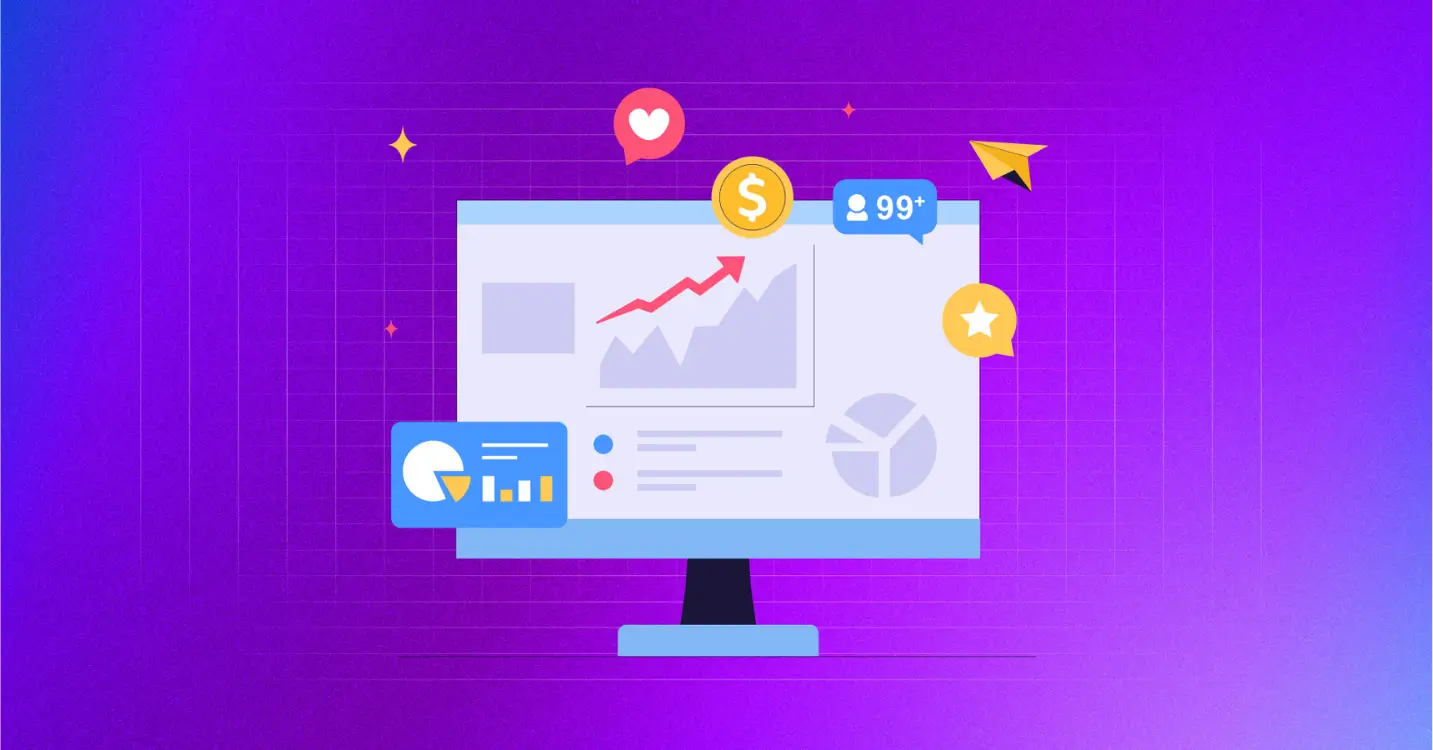
19 Actionable Strategies to Increase Ecommerce Sales with Minimal Effort (2025)
SHARE :



On a cold January morning, it’s snowing outside, and sweats have long begun forming as dew drops on John’s forehead.
He has been running to and fro like his life is on the stack, but he has not bothered the least. It’s the opposite. His Ecommerce sales growth has been outstanding recently, and he’s just busy shipping orders. But things start going downhill when his alarm starts to beep. It’s a dream.
No, John, it didn’t have to be a dream; it could have been your reality only if you had read this article before.
This article will enlighten you with 19 excellent strategies for improving your Ecommerce sales, along with all related and vital information for your convenience.
So, keep reading and discover awesome Ecommerce tips and tricks to boost your sales with minimum effort and without breaking the bank, of course.
Why do you need Ecommerce sales strategies for your business?
Global Ecommerce retail sales have reached $5.8 trillion in 2023 and are projected to reach beyond $8 trillion by 2027, as per Statista research. That’s a massive 39% growth we are talking about.
This is good for the customers as they will get better and more affordable choices. But for sellers, things are the other way around. Because it’s hard for them to be noticed by their customers and meet their rising expectations when plenty of alternatives are just a fingertip away.
The only solution is to master the art of sustainable marketing strategies to increase Ecommerce sales consistently.
A sustainable Ecommerce sales strategy allows you to manoeuvre your marketing approaches that adopt the rising consumer demand and serve as a guideline for your sales and marketing team.
Here’s why appropriate strategies are so important to increase your Ecommerce sales for business:
- Gives your business a competitive edge: The Ecommerce industry is just too crowded. A solid Ecommerce sales strategy helps you to make your brand stand out, identify your selling points, and offer unique facilities to your audience that your competitors don’t.
- Keep your budget in check: Without a clear strategy, your efforts to increase sales online can become scattered and ineffective. A well-defined Ecommerce sales strategy ensures that your campaigns are targeted, data-driven, and aligned with your business goals, helping you boost Ecommerce sales and get the most out of your marketing budget.
- Ensure a higher conversion rate: Driving traffic to your store is only half the battle. A strong Ecommerce sales strategy helps you increase sales on your Ecommerce website by optimizing product pages and ensuring effective interaction between your business and the visitors.
- Simplify the buyer journey: How to improve Ecommerce sales isn’t just about selling—it’s also about creating an enjoyable shopping experience for your customers. From relevant product recommendations to an easy checkout process, a good strategy creates a convenient buyer journey that will eventually build a loyal consumer base for your brand.
- Adopt consumer behaviour: Consumer preferences and behaviours are always changing. Dynamic Ecommerce strategies allow you to stay flexible to the latest marketing trends and meet customer expectations accordingly to grow Ecommerce sales.
- Measure and improve performance: A strategic approach to increasing online sales involves analyzing data to understand what’s working and what’s not. Adding Google Analytics to your website and other analytical tools will help you make informed decisions, adjust your tactics, and boost your Ecommerce sales spending minimum behind your efforts.
- Scale your business more effectively: Your business will naturally get more complex as it expands. A clear Ecommerce sales strategy enables you to manage your operations successfully, help maintain an effective supply chain and explore new markets with minimum risks.
Days are long gone when launching a website is itself a big thing. The online marketplace has become too chaotic, and it’s easy to be just lost in the wilderness.
At the same time, the opportunity to increase e-commerce sales has become more dominant only when the right strategies guide you. Don’t worry; we will get there shortly.
Which factors can drive your Ecommerce sales the most?
If you are new to the Ecommerce industry, you must’ve noticed how fickle your sales can be. Have you ever wondered, “Why is everything changing so suddenly here?”
There are plenty of reasons behind the fluctuation in Ecommerce sales growth. But when we started to research deeply, we found the key factors behind the Ecommerce sales drive.
As a business owner, you must understand these factors clearly to increase Ecommerce sales, and you’ll meet them in this section.
1. The amount of traffic generated on your website
Your website’s traffic lays the foundation for your Ecommerce sales growth. Without visitors, there’s no one to convert into customers.
You first need to focus on attracting lots of quality traffic to your website through marketing campaigns and boosting your website SEO to increase Ecommerce sales. Then, you are ready to implement different Ecommerce tricks to turn them into your customer.
2. Proportion of the visitors turned into customers
Even with higher traffic on your website, your efforts to increase Ecommerce revenues will not cut it if they do not convert into customers. That’s why the proportion between traffic rate and customer conversion is an important parameter in the Ecommerce industry.
Crafting marketing strategies that boost your conversion rate can drive more Ecommerce sales even when your website visitor growth rate has been slow.
3. Lifetime value added by the customers
Customer Lifetime Value (CLV) refers to the total amount of money you earn through a customer over the time they have connected to your business.
CLV is associated with many other important factors, like the purchase value of each sale, shopping frequency, and customer retention rate. Improving your strategies to excel in these parameters can significantly increase your Ecommerce sales.
19 proven strategies to increase Ecommerce sales
Great strategies are always simple.
We always follow this principle, and the strategies we are about to describe to increase your Ecommerce sales are quite simple and require minimum effort. However, we can promise that their impacts are bigger than you can imagine.
But you should never stop researching the dynamic shift in your niche, consumer psychology, and relying on A/B testing all the time.
Saying all that, it’s time to meet the strategies you have long been waiting for. So, let’s start.
1. Know your target audience and create your ideal buyer persona
Each and every successful business has one thing in common- they know and understand their customers the best.
Without a deep understanding of who your customers are, their needs, preferences, and concerns, all your strategies to increase Ecommerce sales will definitely not succeed. That’s why it is so important to research your target audience and create an ideal buyer persona.
An ideal buyer persona is an imaginary ideal customer of your business that helps you and your team visualize your target audience better and set an Ecommerce sales strategy accordingly. It contains detailed information like:
- Demographic: Age, Location, Education, Gender, Occupation, Income, etc.
- Psychographic: Values, Interests, Lifestyles, Triggers, etc.
- Behavioural: Goals, Pain points, Spending habits, etc.
However, getting your ideal buyer persona right all the time is difficult, and wrong profiling can severely jeopardize your Ecommerce sales growth. But don’t worry, the help is here.
Follow the below-mentioned strategies always to get your ideal buyer persona accurate:
- Join Facebook groups, Subreddits, X communities, WhatsApp and Messenger groups, or/and Telegram channels related to your business or industry. See what your potential customers discuss and understand their needs and pain points.
- Use different web analytical tools like Google Analytics, Google Search Console, and Microsoft Clarity to understand your search performance, most visited pages, average time spent, and cart products. This will help you understand what your audience values most.
- Always review your support tickets, live chats, or emails to understand the confusion, complaints, and struggles your potential customers face. This will help you realize their pain points, necessities, and expectations.
- Gather direct feedback from your customers through surveys, emails, polls, or interviews, whatever is convenient for you. Use open questions like what challenges they face, their preferences and suggestions, and how they find you. These data will provide insight into their challenges and interests.
The more you know about your target audience, the more you will understand better how to distribute and allocate resources to design your products better and make marketing campaigns rewarding.
2. Optimize your website performance
A good user experience starts with a good website.
No matter how great your products are, visitors will leave without buying anything if your website is slow, confusing, or visually unpleasant. That’s why optimizing your website performance is one of the best ways to increase Ecommerce sales.
To make sure that your website doesn’t frustrate the visitors, it should have a great navigational experience, faster loading speed, higher search engine visibility, and excellent visual presentation.
Only when you can optimize all these touchpoints will it start attracting more potential customers to your website and boost e-commerce sales.
“Easier said than done”- you might say. With proper guidance and organized approaches, website optimization will not give you a hard time.
Follow the below-mentioned strategies to optimize your website performance to the max:
- Use tools like Page Speed Insight to measure the loading speed and aim to keep the loading time under 3 seconds. Always use compressed images and videos. Minimize the use of heavy scripts or plugins and use a reliable hosting provider for faster server response. Make sure to clear browser caching and implement a Content Delivery Network (CDN).
- Make sure that your website design is clean and represents your business well. Use clear navigational buttons and add breadcrumbs to help your visitors track their location. Try to add a search bar with autocomplete functionality.
- Conduct thorough keyword research relevant to your industry and use them in titles, descriptions, alt texts, and meta tags. Create high-quality content like how-to guides, myth-busting, and product use cases incorporating appropriate keywords, and regularly update your site with fresh content to stay relevant.
- Ensure that the URLs on your website are short, descriptive, and keyword-friendly. Focus on building backlinks from reputable websites. Regularly audit your site and look for technical issues like broken links, duplicate content, or crawl errors. Update your Google Business Profile listing with accurate information.
Customers will always judge your business based on your website. Your website performance should always stay at its best to create a good and long-lasting impression on visitors and increase sales online.
Do you want to learn the secrets of a successful business website launch?
3. Optimize your product listings
Edmund Burke once said, “Good order is the foundation of all things”, and we could not agree more.
While strategic product listing with clear descriptions, labelling, and placements can significantly raise their demands, a disorganized and unclear list can lead to the loss of potential clients.
Tweaking product listings to increase the perceived value of the items is a common e-commerce trick used by many global brands.
For example, while visiting top Ecommerce stores like Amazon or AliExpress, you might notice that some products are labelled as Best Seller, Top Picks, or Most Loved.
Famous retail brands like Apple or Nike always highlight their new or top-selling products on the top of their home pages with their key features.
These strategies can significantly drive Ecommerce sales for the brands because products that seem to be in high demand are perceived as more valuable by the potential customers.
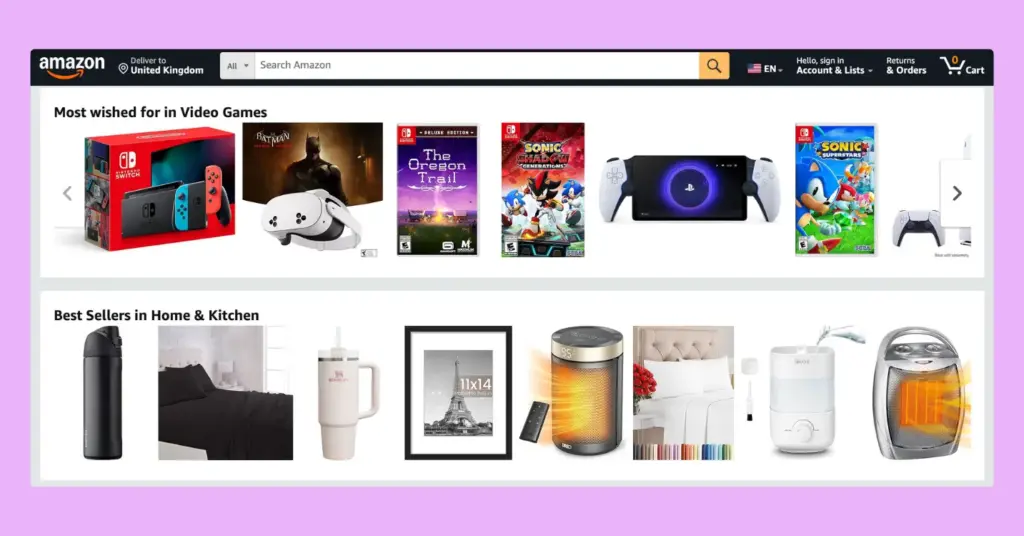
Here’s how to improve sales in Ecommerce by optimizing product listing following these simple tricks:
- Your product title is where potential customers will actually pay attention. So, make sure to write clear and descriptive product titles with relevant keywords that include all necessary details like brand, model, size, colour, or key features.
- Visuals are the most important thing in Ecommerce, as customers can not physically see or touch the products. That’s why you must always use high-quality images that can show your product from different angles and try to provide zoom functionality. Add clear videos to demonstrate product features, benefits, and use cases.
- Re-organize and label your products based on different occasions or events. For example, if you sell clothes, highlight your winter collection on your home page and put special tags like “Best Sellers” or “Limited Edition” on your high-demand products to raise their perceived value.
Most importantly, don’t forget to be creative while optimizing your product listing. Let’s say that you are writing a product description for your blender. Instead of “This blender has a powerful motor”, write “Enjoy your morning smoothie literally within seconds with our powerful motor”.
4. Provide mobile-friendly shopping experience
Did you know that 77% of Ecommerce store traffic comes from mobile devices? Without optimizing your website for a smooth mobile shopping experience, you are likely to lose a huge proportion of your potential customers. That’s a huge red flag for any business.
A mobile-friendly website ensures that your potential customers can browse and shop smoothly from your Ecommerce store regardless of the device they are using. It has become a strategic necessity for businesses to stay competitive and outshine their competitors by prioritizing user experience.
Here’s how to boost your Ecommerce sales by ensuring a mobile-friendly shopping experience:
- Use a highly responsive design for your website that fits any screen size, whether it’s a smartphone, tablet, or desktop. Test your website on multiple devices and browsers to ensure that it provides a user-friendly experience everywhere.
- Mobile screens are smaller, so use a hamburger menu (three horizontal lines) to organize categories neatly and make navigation easier. Make sure that your website’s contrast ratio is high, the colour scheme is gentle, and the breadcrumbs are implemented so that visitors can enjoy their stay and be comfortable.
- Focus on enabling mobile-friendly features like click-to-call functionality for customer support, push notifications to alert users about sales, discounts, or abandoned carts, and a geolocation facility to show nearby store availability.
When you ensure an enjoyable journey for your website visitors, no matter what their devices are, they will naturally feel encouraged to stay longer, explore more, and eventually complete a purchase. We can no longer deny the fact that “feel-good” has a definite charm on consumer psychology.
5. Take advantage of AI tools
Let’s face the fact– the fourth industrial revolution is brewing, and artificial intelligence (AI) is leading the weave. AI-powered tools are redefining operational procedures and management efficiency for businesses and can be used to deliver personalized experiences to customers to increase Ecommerce sales.
AI tools and platforms can be used to analyze enormous amounts of data in no time and predict consumer behaviour with high precision. Renowned brands are already experimenting with AI to understand product trends, optimize pricing, and offer advanced user experience.
For example, Alibaba is using AI to predict consumer demand and filter products that suit their needs. Spotify’s AI DJ feature is quite well-known for suggesting personalized music tracks to listeners. The list of usability of AI in business is just getting longer.
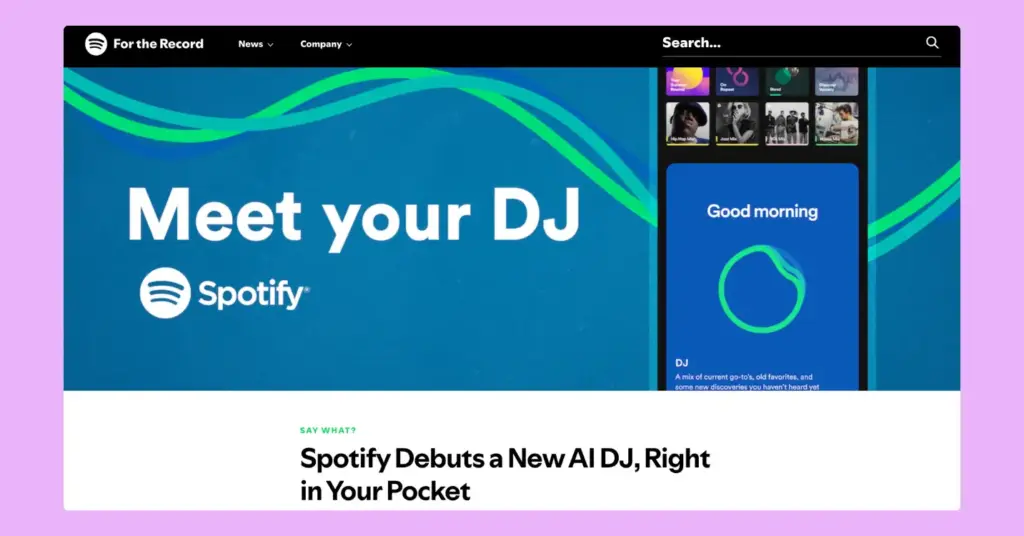
Here’s how to get more sales online by leveraging AI for your Ecommerce store:
- Use AI-powered recommendation engines for personalized product recommendations by analyzing a user’s behaviour(search history, previous purchases, etc.) to suggest related products. For example, if a customer often buys running shoes, AI tools can suggest socks or other fitness gear. Moreover, AI tools can help you manage inventories on platforms like Walmart and Amazon.
- Implement AI chatbots to streamline your customer support. AI can primarily be used to provide instant responses to common questions about your business to keep visitors engaged. Advanced chatbots can even analyze human sentiment and rally tough issues to human support agents.
- As we mentioned earlier, AI tools have extreme data-processing capabilities. They can help you to analyze market trends, competitor pricing, and consumer demand to set competitive pricing for your products. For example, AI can automatically set prices during shopping seasons to ensure maximum profit.
Why fight the wave, when you can ride it, right? It’s time to embrace AI tools with open arms. Let the power of artificial intelligence replace your repetitive tasks and make data-driven decisions that ensure your Ecommerce sales growth.
6. Simplify the checkout process
As they say– all’s well, that ends well. Checkout is the last interaction of your buyer journey, and simplifying the process can leave a long-lasting good impression on your customers.
According to Shopify findings, 17% of online shoppers ditch brands when they face a complicated checkout process. That’s why a smooth checkout flow is a must for retailers to encourage customers to spend more money and increase Ecommerce revenues.
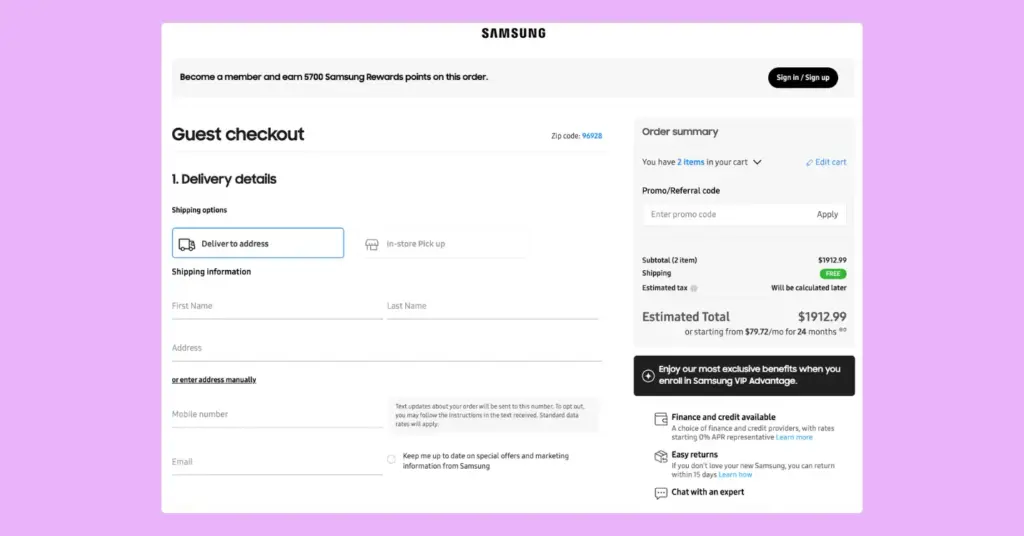
Here’s how to improve sales in Ecommerce by streamlining the checkout process:
- Provide a guest checkout option that allows customers to complete their purchases quickly without creating an account. Rather, you can apply tricks like discounts or loyalty points in return for opening an account after the checkout process is complete.
- Limit your checkout process to a maximum of two or three steps and include only necessary information like shipping address, payment processes, and order summary. Implement a progress indicator bar to let your buyers know how close they are to completing their purchases.
- Apply autofill for information like name, address, and payment details and use address validation tools to make sure that the shipping information is accurate.
- Provide a flexible payment method that includes various options like credit/debit cards and digital wallets like PayPal, Apple Pay, Google Pay, etc. Enable pop-ups asking for permission before saving their billing info.
- Hidden costs and taxes are a huge turnoff for the customers. Display all kinds of costs like shipping fees, taxes, or any other fee before your buyers proceed to the checkout page. Offer free shipping occasionally and coupons like “Free shipping on orders over $50” to encourage customers to add more products to their carts.
A simple checkout process is more than a convenience for customers; it makes them remember your brand for a long time. It makes them feel safe, and when a customer finds a business as easy and secure, they are likely to return again and again.
7. Showcase your customers reviews and testimonials
The hardest part of a buyer’s journey is to trust a business. With scamming incidents being a dominant part of virtual business, adding genuine user reviews can validate the authenticity of a company.
Reviews and testimonials are purely user-generated content and formidable forms of social proof. No matter how well your website copy is written, people will always trust the opinions of your previous customers the most. Going through reviews and testimonials has become the initial phase of consumer research about your brand.
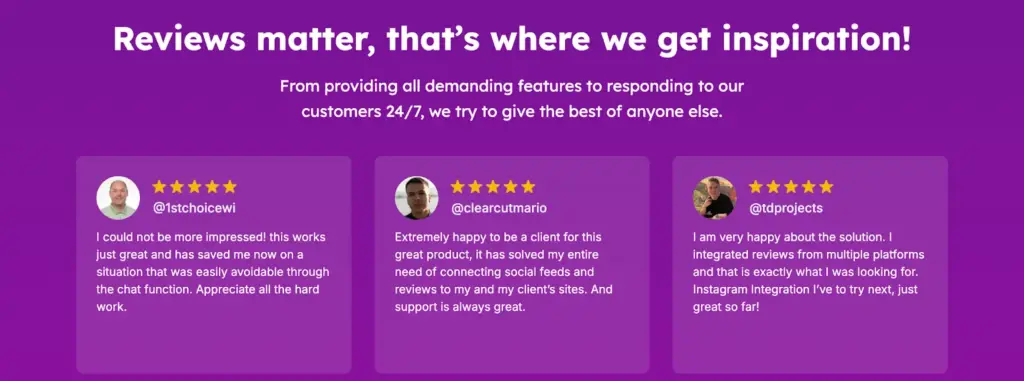
There are several popular and dedicated review platforms like Yelp, Trustpilot, TripAdvisor, etc., which are trusted so much by shoppers. Even most Ecommerce websites create their own custom review field as a token of transparency.
That’s why using review aggregators to showcase your reviews from all different sources is compulsory for businesses to increase Ecommerce sales and earn the trust of their potential customers.
Here’s how to increase Ecommerce revenues by leveraging customer reviews and testimonials:
- Place customer reviews and ratings on your home page and product pages and near the Add to Cart buttons. Make sure that they are always visible to your website visitors. Use tools like WP Social Ninja to integrate customer reviews and testimonials on your WordPress website.
- Add notification popups on your website highlighting reviews to catch the attention of your audience. It’s natural for people to feel curious when something suddenly comes to the screen. When they find that it’s a positive review from your customer, they will likely stay on your site for more time to explore.
- Collect testimonials from your long-term customers and industry experts. Detailed testimonials that include images, business names, and website addresses have a higher persuasive impact on potential customers. You can even create a dedicated testimonial or case studies page to show how your product can solve its problems in real-time.
- Ask customers to leave reviews after they’ve made a purchase. Try to send follow-up emails with a direct link to the review section and offer discounts or loyalty points for leaving a review.
- Always respond to your reviews– both positive and negative. While adding positive reviews can define your business quality, responding to negative reviews shows your commitment to improvements.
Trust issues are the biggest pain points for online shoppers. Showcasing your reviews and testimonials addresses this issue and inspires your potential customers to take the leap of faith. In the long run, adding reviews and testimonials will help you create a loyal consumer base by making them feel valued.
Win your customers’ hearts with exceptional features
Discover how WP Social Ninja can assist you in designing outstanding customer experiences.
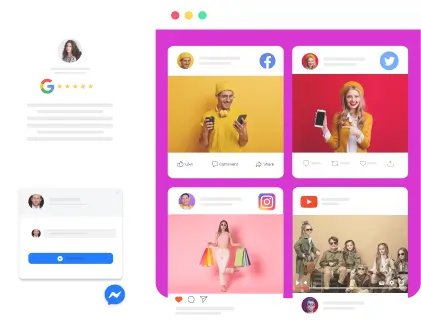
8. Create a sense of urgency with FOMO marketing
Fear of Missing Out (FOMO) is a common psychological trigger where people share a feeling that they might be missing out on excellent opportunities. By incorporating this phenomenon in marketing, businesses can increase their Ecommerce sales to a great extent.
FOMO marketing can influence your website visitors to make their purchase decisions faster because our natural instinct is not to let go of any limited opportunity.
Here’s how you can use FOMO for your Ecommerce sales growth:
- Add countdown timers to your product pages or promotional banners to highlight limited-time offers, flash sales, or early-bird discounts.
- Display messages like “Only 3 left in stock!”, “Selling fast!” or “Last 10 pieces” to help your website visitors make their purchase decisions faster.
- Run time-sensitive promotions like “24-hour flash sales” or “Black Friday discount only,” to create urgency and promote them through email campaigns, social media, and websites.
- Use notification popups like “10 people are viewing this product right now” or “5 customers added this to their cart in the last hour” to create a sense of competition.
When you know how to pull it off, FOMO is a strong marketing asset. Besides driving Ecommerce sales, FOMO marketing can keep your visitors excited and sends the message that sticking with your business can be rewarding. That’s the starting point of consumer loyalty.
9. Launch personalized email marketing campaigns
Email marketing was, is, and will be one of the best ways to increase Ecommerce sales and build a long-term relationship with customers. This form of marketing allows brands to reach closest to their prospects and their inbox and hence, an effective way to increase Ecommerce sales.
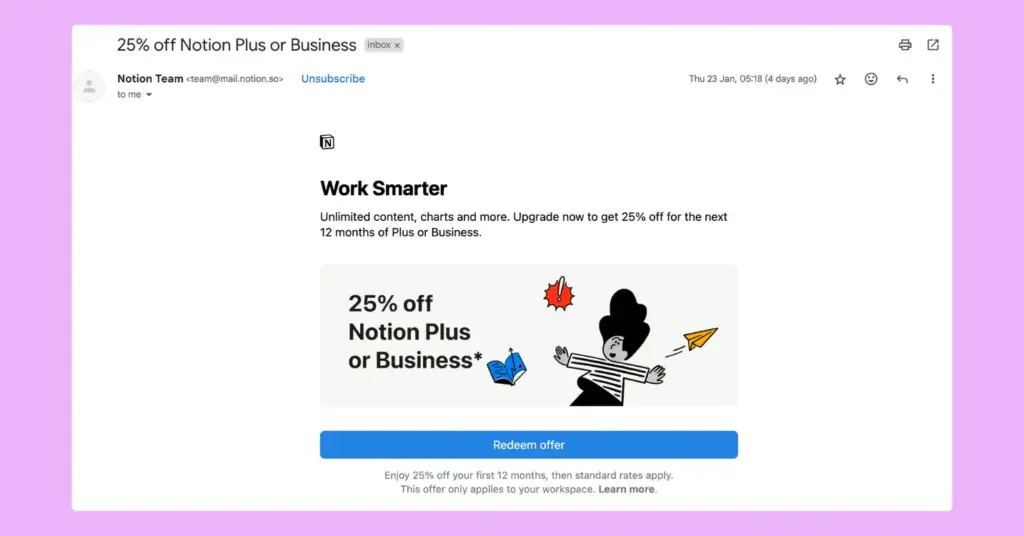
However, there is no one-size-fits-all for email marketing. First of all, the Ecommerce industry is so packed right now, and it is already hard enough to collect emails from prospects. Even if you pull it off somehow, sending generic emails from time to time will only lead them to hit the unsubscribe button.
Here’s how to increase sales on Ecommerce website using email marketing:
- Personalize your email content for higher engagement. Use customer data like name, location, purchase history, and browsing behaviour to create unique email content that feels personal, like addressing customers by their first name. Segment your email list into groups (e.g., new customers, frequent buyers, cart abandoners) to send targeted messages.
- Send automated cart abandonment emails to remind customers about the items they didn’t buy. Add a clear CTA like “Just a friendly reminder” and a link back to their cart. Offer incentives like free shipping or a small discount to encourage them to complete their purchase.
- Offer rewards to your email subscribers with exclusive discounts, early access to sales, or special promotions. For example, “Special offer for our special subscriber- enjoy 20% off your next order!”
- Identify customers who haven’t made a purchase in a while and send them reminder emails with special offers. Use subject lines like “We Miss You. Don’t let it be the end” to grab their attention.
Every good relationship starts with a good connection. Personalized email campaigns will help you start a meaningful relationship with your subscribers, deliver meaningful content to them, and increase your Ecommerce sales.
10. Focus on your content marketing strategy
Content is the king. You might’ve heard this phrase many times over the internet, and it’s true. We can vouch for that.
Good content marketing is a powerful tool that attracts potential customers, raises brand awareness, manifests trust, establishes brand authority, and eventually leads to achieving recurring buyers.
What makes content marketing so special is that it’s not just about selling products. Rather. Its original power hides behind its ability to provide value, solve problems, and offer an excellent buyer journey.
However, content marketing is quite sensitive, and you need to strategize smartly to increase Ecommerce sales.
Here’s how to increase sales on an Ecommerce site using content marketing:
- Write and publish informative and engaging blog posts that address the pain points, interests, and questions of your target audience. For example, if you sell childcare products, write blogs like “What Mothers Should Know about Child Hygiene” or “10 Habits That will Keep Your Child Healthy”. Use relevant keywords naturally to improve SEO and drive organic traffic to your site.
- Create video content about product demos, tutorials, or behind-the-scenes to showcase your products and usability. Video content is naturally engaging, and it can help your potential customers visualize the use cases of your products and their value.
- Create detailed buying guides or comparison articles to help customers make informed decisions. For example, “Blender Buying Guide: Top 5 Features to Look For” or “Wireless Earbuds Comparison: Which One is Right for You?” It will help you build your reputation as an industry expert and make your brand more credible.
- Use keyword research tools to identify high-traffic, low-competition keywords related to your products and industry. Optimize your content with these keywords in titles, headings, meta descriptions, and throughout the text.
Strategic content marketing lets your prospects know you are here for them and can eventually turn your business into a big brand. Good content generates value for buyers, and it’s in our nature to trust someone who teaches us a good lesson.

Get exclusive social media marketing tips and tutorials in your inbox!
11. Implement A/B testing with your website
In the competitive Ecommerce market, laying still can severely wound your efforts at any time. That’s why you should always experiment with your website and conduct A/B testing to figure out what changes can help you stay ahead of the competition.
A/B testing refers to comparing two versions of any webpage or element (like a button, headline, or image) to determine which one performs better. This will allow you to increase Ecommerce sales by optimizing your site for maximum performance.
Here’s how to boost Ecommerce sales by implementing A/B testing with your website:
- Experiment with different CTA text, colours, sizes, and placements. For example, test “Buy Now” vs. “Try for yourself”. Try different colours for your CTA to understand what ticks your visitors the most.
- Test different layouts for your product pages, such as the placement of product images, descriptions, reviews, and pricing. Experiment with placing customer reviews at different positions to monitor how they affect visitors. Try using a sticky “Add to Cart” button that stays visible as users scroll.
- Try different headlines and product descriptions to see which ones work better for your audience. For example, try a benefit-focused headline like “Stay Comfortable All Day” vs. a feature-focused one like “Breathable Fabric Technology.” Track how they perform and set your strategy accordingly.
- Experiment with different pricing options, such as showing discounts as percentages vs. dollar amounts (e.g., “40% Off” vs. “Save $50”). You can also test bundling products or offering free shipping to see what triggers more purchases.
- Try using exit-intent popups to see if that convinces your leaving visitors to stay. Display a time-sensitive discount or special offer when a user tries to leave. For example, “Wait! Get 15% Off Your First Order”. Exit-intent popups will let you know whether pushing your visitors to stay works or backfires.
A/B testing will entitle you to make more data-driven and informed decisions. You can never bring out your maximum business potential until you decide to experiment with your website. No knowledge is better than practical knowledge.
12. Utilize Social Media Marketing
Social media passed the threshold of mere communication platforms. With 5.22 billion users, roughly 64% of the global population, it’s not an exaggeration to say that social media has reshaped our world. At this point, we can not deny how social media has changed the concept of marketing for businesses.
Social channels have provided an equal field where marketing is affordable for all businesses. Even the platforms provide amazing facilities to help businesses reach their goals and make marketing a fruitful experience.
By setting up a clear social media marketing goal, businesses can reach audiences in their comfort zone, form a deep bond, and significantly increase Ecommerce sales.
The list of businesses that succeeded using social media platforms is just too big. Take Popflex, a women’s fashion brand, as an example. The founder, Cassey, started with her YouTube channel. She and her team made Popflex a multimillion-dollar business using the popularity and traction of short-form videos.
Here’s how to increase Ecommerce sales utilizing social media marketing:
- Regularly post on your social channels and always respond to comments, messages, and mentions to connect with your audience. Use different tools the platforms provide, like filters and stickers, to make your posts more interactive. Regularly host live Q&A sessions, polls, or contests to encourage interaction and keep your audience engaged.
- Embed social media feeds on your Ecommerce website using WP Social Ninja to strengthen your social presence and persuade your visitors with social proof. When visitors find the comfort of social media on your website, they will naturally be able to trust you more, and your business will feel more human.
- Mention your website’s homepage and product page URLs on your social media posts, stories, or videos to drive more audience to your Ecommerce store. People coming to the website through your social channels are genuinely interested and will likely be converted to regular buyers.
- Motivate your customers to share photos or videos of themselves using your products and repost this content on your social media channels. User-generated content (UGC) serves as an excellent social proof. Prospects care more about how your other customers feel about your product.
- Use shoppable features of different social channels to make shopping easier for your followers. Platforms like Instagram and Facebook allow you to create shoppable posts and stories, where users can click on a product tag to view details and make a purchase directly. You can post a photo of your latest collection with product tags or create a story highlighting a limited-time offer.
- Take advantage of the short-form videos and their addictive nature. Create more YouTube Shorts, Instagram Reels, and TikTok videos to capture attention and deliver necessary information quickly to your followers. Whether it’s a quick tutorial, a product demo, or a trending challenge, these videos drive higher engagement and conversions.
- Use social media advertising tools like Facebook Ads, Instagram Ads, or TikTok Ads to reach your desired audience. Target users based on demographics, interests, and behaviours, even though they have not interacted with your brand yet.
Marketing is all about following the crowd, and no other place will offer you a better opportunity to reach a vast audience than social media. When done right, social media marketing has the ability to turn a local business into a global brand.
Are you concerned about the budget issue for social media marketing?
13. Rely on influencer marketing
Influencers have been dominating the virtual realm for quite a long period. They have a loyal community or fan base who trust them and rely on their advocacy. That’s why partnering with one or more influencers is an excellent and effective way to gain trust and increase Ecommerce sales.
Influencer partnership has different forms. Some collaborations are unpaid, where brands send their products to the influencers and request coverage. At the same time, Long-term partnerships involve monetary transactions and brand ambassadorship.
Here’s how to drive ecommerce sales through influencer marketing:
- Choose influencers carefully before going for collaboration. Make sure that their audience matches your targeted customers. For example, if you sell sports gear, you should choose influencers who create fitness-related content. Also, look for influencers with high engagement rates (likes, comments, shares) rather than just a large follower count.
- Encourage influencers to create authentic, relatable content that showcases your products in a natural way. For example, an unboxing video, a tutorial, or a day-in-the-life post featuring your product.
- Provide influencers with unique discount codes or affiliate links to share with their followers. This will help you assess the benefits of collaboration. For example, “Use code FITNESS20 for 20% off your first order!”
- Instead of one-off collaborations, build long-term relationships with influencers who genuinely love your brand. This will help you maintain consistency and improve the credibility of your brand in the long run. Plus, you can bypass the hassle of collaborating with new influencers and describe your products from the ground up.
Relying on influencers will help you use their acceptance to your advantage. This will not only make your Ecommerce sales grow faster but also build brand authority rapidly in your niche. Start planning your influencer collaboration today, and see the magic happen.
14. Implement Augmented Reality (AR) and virtual try-ons
The biggest challenge for online shoppers is that they can’t see or touch the product before buying. However, the latest technologies, like augmented reality (AR) and virtual try-ons, can bridge this gap by letting customers visualize products in real time.
Global brands are already using AR to provide their customers with an unforgettable shopping experience. Swedish furniture company IKEA uses AR through its app, IKEA Place, to help customers visualize products in their homes. Once a product is selected, the app adjusts it to match the room’s dimensions and places it virtually on the floor to give potential buyers a pre-experience of their products.
Even social platforms like Instagram and Snapchat have already introduced AR filters and lenses, allowing businesses to create a hyper-realistic product experience for potential customers.
For example, Snapchat’s AR shopping lenses let users virtually try on products like sunglasses or makeup, and Instagram’s AR effects enable brands to gamify their campaigns, boost engagement, and make more sales through compelling AR ads.
Here’s how to increase sales online using AR:
- Allow customers to try on clothing, glasses, jewellery, or watches virtually using their smartphone or computer camera using Snapchat. For example, a customer can see how a pair of sunglasses looks on their face before purchasing.
- Use tools like Augment to enable customers to visualize how furniture, decor, or appliances will look in their space using AR. For example, they can see how a sofa fits in their living room or how a painting looks on their wall.
- Provide a gamified experience using AR that engages customers and encourages them to explore your products. For example, create a virtual treasure hunt where customers can unlock discounts or exclusive products by scanning AR markers on your website. You can use tools like 8th Wall or Blipper.
- Offer virtual makeup try-ons for beauty products like lipstick, eyeshadow, or foundation. When customers can see how different shades look on their skin tone, they will feel more confident to shop from your brand. Consider using tools like ModiFace by L’Oréal.
AR and virtual try-ons allow brands to provide a realistic and personalized shopping experience to customers. This will make your brand appear as an innovative and customer-centric business.
Besides, incorporating modern technologies will make your customers feel premium, eventually increasing Ecommerce sales.
15. Provide chat support
Communication is the most basic consumer demand in Ecommerce. Sometimes, customers are almost ready to buy from you and expect quick and convenient solutions to their questions and concerns. Adding a chat support system can provide an excellent solution to this issue and increase Ecommerce sales.
A chat support system on your website lets your customers know you are one fingertip away from addressing and resolving their concerns. This allows customers to get instant answers, resolve issues, and make informed purchasing decisions without leaving your site.
Here’s how to generate sales online by providing chat support on your Ecommerce website:
- Consider adding social chat widgets on your website and integrating popular platforms like WhatsApp, Messenger, Telegram, Viber, etc. Social chat platforms on your website will make your audience feel more comfortable communicating.
- Set a custom greetings message like “Hi, we are here to help you. How can I assist?” on your chat widgets to make your customers feel welcome.
- Arrange a team that will work 24/7 to support and answer customer queries through chats. If that’s unmanageable for you right now, set a fixed timetable for your offline period so that your customers can know your availability clearly.
- Try using AI chatbots to answer common questions like “What’s your return policy?” or “Do you offer international shipping?”
A good chat support system provides smooth communication and makes customers feel valued, heard, and understood. When your customers realize you’re here for them, it becomes easier for them to trust you and make their purchase decisions.
16. Utilize customer loyalty programs
A well-designed customer loyalty program is one of the best ways to increase Ecommerce sales. When you reward your customers for loyalty, it’s natural for them to come back again whenever they need something that you sell.

A happy customer will likely initiate word-of-mouth marketing and recommend your brand to their friends and family. Customers feel valued, and your business can increase sales and form long-term relationships- the benefits of loyalty programs go both ways.
Here’s how Ecommerce stores can increase sales using customer loyalty programs:
- Create a points system where customers earn points for every purchase, which they can later redeem for discounts or free shipping.
- Design a tiered loyalty program where customers unlock higher levels of rewards as they spend more. For example, Silver, Gold, and Platinum tiers with increasing benefits like free shipping, early access to sales, or exclusive discounts.
- Encourage loyal customers to refer friends and family by offering rewards for both the referrer and the new customer. For example, “Refer a friend and get $10 off your next order when they make their first purchase!”
Successful loyalty programs help you increase Ecommerce sales and build a loyal community of brand advocates who will promote your business to others. The investment is low, but the return is higher.
17. Optimize your website for voice search
“Hey Alexa, find the best running shoe brands?”
This feels quite familiar, right? With the rise of smart speakers, virtual assistants, and voice-activated devices, voice search is becoming an increasingly popular way for customers to find products and services online.
That’s why you can no longer rule out the benefits of optimizing your website for voice search. Always upgrading your business with technological innovation is the key to increasing Ecommerce sales.
Here’s how Ecommerce can increase sales by optimizing a website for voice search:
- Voice searches are typically phrased as questions or full sentences. For example, instead of typing “running shoes,” a customer might ask, “What are the best running shoes for beginners?” Use tools like AnswerThePublic or Google’s “People Also Ask” section to identify long-tail, conversational keywords and incorporate them into your content.
- Develop FAQ pages that answer common questions related to your products or industry. For example, “How do I choose the right running shoes?” or “What’s the return policy for online orders?” Structure your answers in a clear, concise format to increase the chances of being featured in voice search results.
- Implement schema markup (structured data) to help search engines understand your content better. For example, use product schema to highlight details like price, availability, and reviews.
Changes are inevitable. By optimizing your website with changing technologies like voice search, you can ensure your business stays afloat, no matter how strong the waves are.
18. Monitor and analyze performance metrics to increase Ecommerce sales
Every business is different and has its own selling point. Among all the strategies we’ve mentioned so far, some will work more than fine for you, and some might be a little underperforming. That’s why understanding your strong point is important; you can not do it without proper data.
Data never lies. No matter how great your business is, if you don’t monitor and analyze the data of crucial performance metrics, you will fall.
Here’s how to drive Ecommerce sales by monitoring and analyzing performance metrics:
- Track key performance metrics like conversion rate, cart abandonment rate, average order value, etc., to identify your strong suits and weak zones. Use tools like Google Analytics or Hotjar to track these metrics regularly.
- Conduct A/B testing on your landing pages to optimize your website for best performance. Experiment with different layouts of your product pages and website copies, brand colour, and button placements to understand what your audience likes the most.
- Use tools like Microsoft Clarity to understand where your visitors spend most of their time and where they drop off. This will help you understand their pain points better and optimize your website for the best user experience.
The sole purpose of monitoring and analyzing performance metrics is to use data properly to make smart decisions to boost Ecommerce sales. Data-backed decisions will allow you to identify the areas of improvement and achieve your business goal better.
19. Implement upselling and cross-selling
Upselling and cross-selling are really smart ways to increase Ecommerce sales. But what are they? Let’s understand them with examples, and then it will be easier.
Suppose a buyer has bought a simple backpack from you. You can suggest rainproof or mountain backpacks with features like high-quality materials and additional space. That’s upselling.
Moreover, you can suggest complimentary products like hiking shoes, hats, or sunglasses to that person. That’s cross-selling.
In short, upselling is a strategy where you guide your customers to buy an expensive version of the product they are using, and cross-selling is suggesting complementary products that might have been useful to them.
Here’s how to ensure your Ecommerce sales growth with upselling and cross-selling:
- Use data from past purchases, browsing history, and cart additions to suggest relevant products. For example, a laptop bag or wireless mouse can be recommended if a customer buys a laptop.
- Create product bundles that offer a discount when purchased together. For example, bundle a camera with a memory card and a tripod.
- When upselling, focus on the benefits of the premium product. For example, if a customer is buying a basic watch, highlight the additional features of the premium model, such as water resistance or longer battery life.
- Show “Frequently Bought Together” or “You Might Also Like” sections on your product or checkout pages to trigger the buying habits of your customers.
The main concept of upselling and cross-selling is to provide a better shopping experience to your customers. When you recommend products that add value to your customers, you are likely to get more recurring buyers.
Common mistakes you must avoid to boost Ecommerce sales
With such high competition, anything can go wrong at any time with your Ecommerce sales growth. No matter how great your strategies are, there are some unforgivable mistakes that you must avoid to sustain your growth.
In this section, we will talk about the most common mistakes that Ecommerce store owners must never commit.
1. Avoiding market research and audience analysis
The dynamic in Ecommerce can be quite scary. Along with fierce competition, it can become deadly for businesses when they fail to understand the market and audience.
Market research helps businesses understand what their product development strategy should be and what consumers really want. Audience analysis provides businesses with a deep understanding of consumer pain points and allows them to offer a better customer experience.
2. Pricing products without understanding the market
Underpricing a product will allow you to cover the manufacturing cost; overpricing will scare your customers away. That’s the iron rule of the business, and that’s why messing with pricing will cost you heavily.
Many businesses set their product pricing based on consumer research. That’s good and safe. However, when you are selling something that provides customers with some extra convenience, they are willing to pay a premium. Just telling you to state the importance of pricing on Ecommerce sales growth.
3. Failing to identify the ideal channels for marketing
Let’s face the fact– building a presence on any platform will cost you a penny. In such a situation, spending your dimes on the wrong platforms will not just drain you away; it will throw you out of the business for good.
Some platforms may seem affordable at first, but they might strike you with hidden costs at any time. Besides, it’s pretty normal for your audience to stay active on particular platforms. So, identifying the right platforms will save you money and take you closer to your audience and vice-versa.
4. Overlooking security issues for website and payment methods
Trust, once broken, will never come back again. If any of your customers ever face security issues conducting business with you, they will never ever come to you again.
What’s worse, they will badmouth you to their peers and leave horrible reviews as a permanent scar on your business. So always make sure that your website is tightly secured and payment methods are up to the top standard.
5. Undermining user experience and site navigation
Nobody likes complacent or bad experiences. Neither do your customers. When your Ecommerce website is difficult to navigate and doesn’t radiate a good experience, visitors will feel annoyed and might just go and not return again.
So, to increase Ecommerce sales, ensure your website is easy to navigate and user experience is always a priority.
6. Providing no contact information
Would you ever have someone who doesn’t tell you his name or address but asks you to come with him? You will not go because it’s shady. Your audience will feel the same when they do not find any contact information on your website.
That’s why it’s your responsibility as a business owner to ensure that your website is fully transparent and your audience has easy access to you.
Get, set, and sell
Ecommerce sales growth is not just about providing great products or services. You need to understand the consumer needs and their pain points and optimize your business website accordingly to offer a premium user experience.
From understanding your audience, optimizing your website, and leveraging multi-channel shopping experience to the latest marketing trends like upselling and cross-selling, we’ve covered all the touch points to increase Ecommerce sales.
Now, you must think about them clearly and identify which strategies you need to implement first. No matter how hard it feels now, it will be alright. Follow this guideline and make sure that you are ready to walk the path of success. Keep believing in yourself, and never give up.
Win your customers’ hearts with exceptional features
Discover how WP Social Ninja can assist you in designing outstanding customer experiences.

Mashfik Upal Aumy
Aumy is a veteran Digital Marketer at WP Social Ninja, specializing in the WordPress industry. With almost two years of experience, Aumy crafts content that breaks down complex branding theories, product marketing campaigns, and social media tactics in a digestible manner for businesses. While not working, you’ll find him reading books, watching movies, or exploring new places on a bike.

Subscribe To Get
Weekly Email Newsletter
Connect, Customize, and Display Social Feeds, Reviews, and Chat widgets



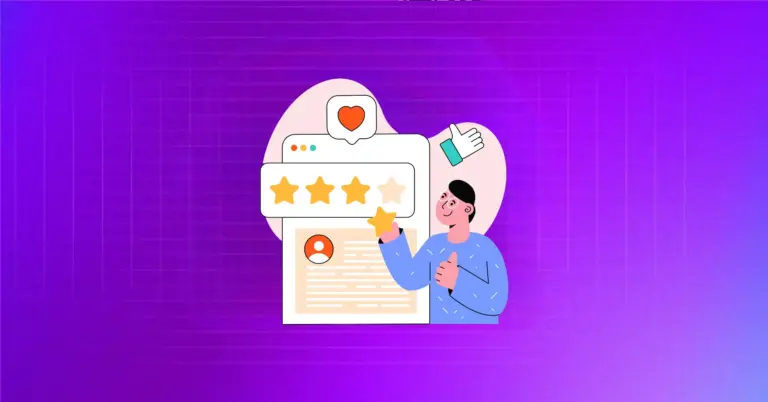











Leave a Reply